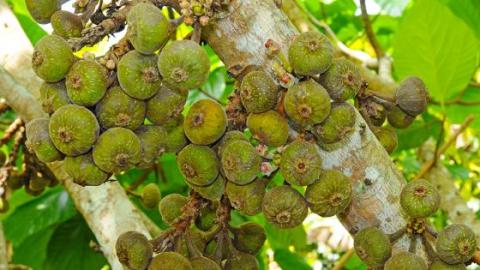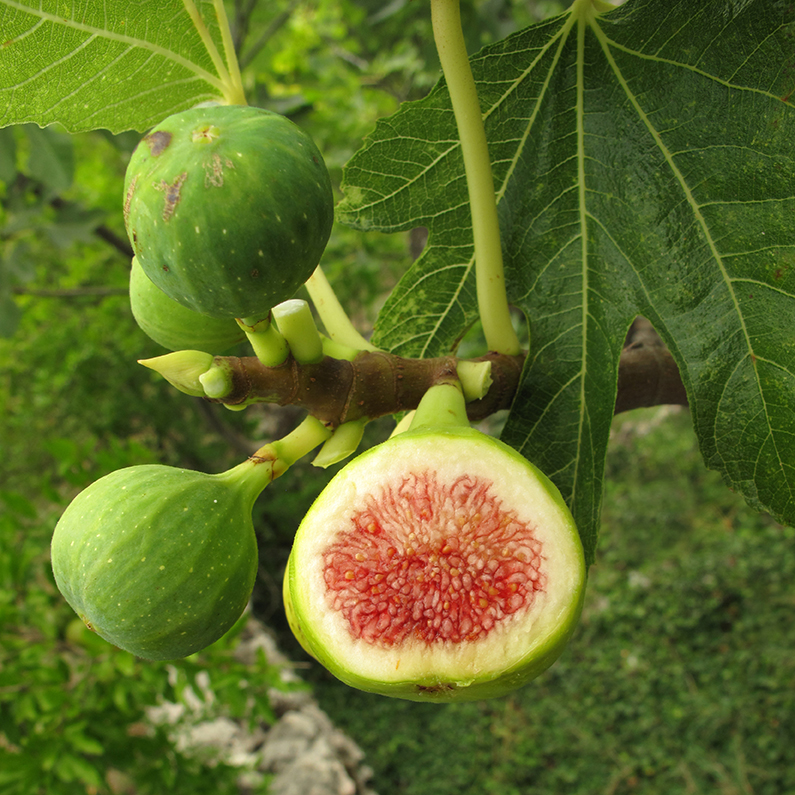Located 6 miles west of Maarat al-Numan in Idlib, Kafranbel is perhaps the most famous town in Syria today after becoming the source of creativity and wisdom in expressing revolutionaries’ feelings, perhaps politics, throughout the revolution’s phases on the ground.
The small town is often celebrated as the banners’ town, that’s the known and told story. Almost a year ago when the army was still in control of Kafranbel, the banners were signed with “occupied Kafranbel,” now that’s liberated, they’re signed with “liberated Kafranbel.”
What does it mean to be liberated in Kafranbel? The author of this article heads to the only dried figs in Kafranbel to find some answers, only to discover that all its workers, are women.
“We’re almost 40 women, we sometimes reach 60 if the roads are safe,” said an old lady in her 80s from Kafranbel whose husband was martyred by a shell that hit their home.
“The company’s bus picks us all from our homes at 7 AM, and drops us around 2 PM.” She and another 7 old women all gathered in a circle on the floor trying to filter the yellow figs from the brown ones. “We also have lunchtime break at 11 AM.”
The other women were reluctant to answer my questions. I came to understand that journalists are not liked here, they are often pictured as “blood suckers,” who come and make reports on residents’ misery to earn money. I respected the old women’s wishes and withdrew from their circle hoping to be welcomed by another.
The factory relocated in a basement in fear of regime shells. The women are divided into groups each one of them completes a task: filtering the figs, boxing them, sticking a sticker on a tiny box and then those are put in large boxes that are to be exported to Egypt and Saudi Arabia.

One thing notable about this old factory (established in 1999) is that all of its workers are from a neighboring village, Bsaqla, and only 8 old women are from Kafranbel. One young girl waved for me to come over, laughing in shyness:
“I am not happy, damn this life.” Said the 16 year-old Otfa when I asked her about the job. “These are difficult times, there are no jobs and our living conditions are getting worse.” She went on explaining that she and her sister are the providers for her family, five sisters and two younger brothers along with her mother. Otfa’s father died in the revolution by natural causes. “We want to help each other in these situations.” She added with the same shy yet inviting smile.
“My fiancé doesn’t like it that I am working in this factory, but due to the current crisis I have to work,” she said while stretching the plastic paper over the figs. Her fiancé is a worker in Lebanon.
Sawsan ِِAl-Sabe’ is Otfah’s co-worker in the same group. The 17 year-old girl has been working in the factory for the past three years. She and her brothers, who are working in Lebanon, are helping their old parents out with the expenses. “They pay us 300 SP a day, I don’t think it’s enough,” she added firmly.
I left the group and headed to another one. A 15 year-old girl is from Bsaqla but lived in Darayya suburbs of Damascus with her family all her life. They came to the village escaping regime shells:
“I am happy with this job, and I don’t want the factory to ever close or else we’ll be out of jobs.”
She went on explaining that her brothers used to be members of the Free Syrian Army and can’t go to Lebanon to work, like the father, in fear of detention or kidnapping.
Unlike many of the girls, Zeinab Hassan Saqqour’s story is different. Due to the lack of opportunities for men to work in the village, she and her husband agreed that she can be the working mom while he stays home to watch the kids:
“My husband is at home, he used to work for the government, he defected and now he’s out of job. That’s why I am working in this factory now.”
Forty women come here every morning trying to create a better life for themselves and for their families. It’s difficult to find a job in a shelled area, even though it’s Assad-free. I am assuming that each of these women experienced fear, loss and anger during the past two years. Nevertheless, they were smiling while I was there, some even took pictures with me, invited me to come again only this time to work a full day with them. I think I might.




